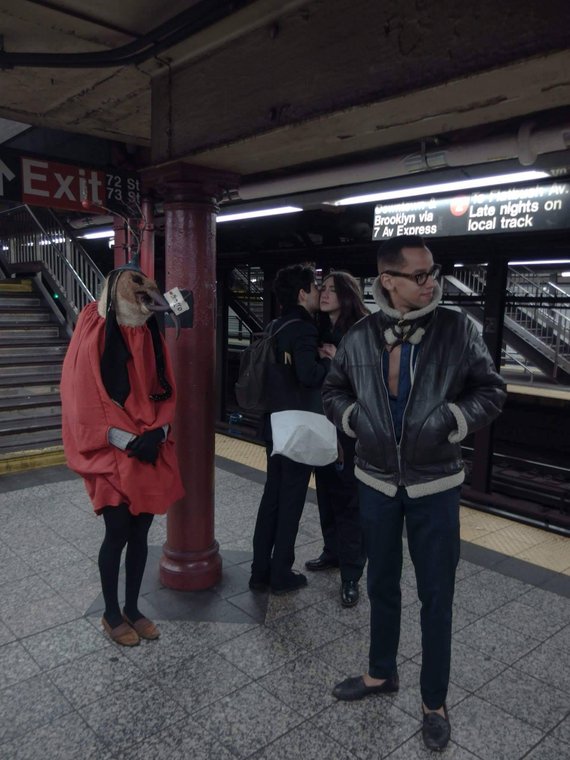Music lovers bracing against the annual onslaught of the Singing Dogs’ “Jingle Bells” may find their savage beasts soothed somewhat by Eddy Chen’s performance of Pachelbel’s Canon, above.
Never mind that the instrument on which he plays four different tracks is a rubber chicken… or more accurately, as per Amazon, a Screaming Yellow Rubber Chicken Non Toxic Bite-resistant Squeaky Toy.
It retains its relaxing musicality. Chen, one half of Australian duo TwoSetViolin, plays that bird like the disciplined, classically-trained pro he is.
Classical chicken covers became a surprise hit for Chen and his partner, Brett Yang, veterans of the Sydney and Queensland Symphony Orchestras, whose virtually sold out world tour was the first of its kind to be entirely financed by Kickstarter donations.
The duo describes its mission as “upholding the integrity of classical music” while making it “relevant to the modern generation through fun, humour and simplicity,” noting, in a joint interview with Violinist.com:
There are people out there who are ready to love classical music, and we have to actively find them. It is the way classical music has been presented so far that makes it so austere. We were lucky that we learned the instrument for 20 years; if we were not musicians, it would be very hard to get into.
Everyone has the potential to like it, but sometimes musicians alienate and scare potential listeners with our pride.
Back when classical music was new, it was not ‘classical’; it was just music.
Today our (classical music audience) is very small, but there are many great musicians
Granted, the standards for classical music are there for a good reason: people want the best art, and that is a standard we should uphold. At the same time, sometimes we see people breaking down and freaking out because of those standards. It is sad to think of all that lost potential and love for music. We feel we are losing audiences; we are losing people who used to love music.
The chicken definitely appeals to young listeners, though surely there’s no age limit for enjoying its take on Erik Satie’s Gymnopédie No.1…
Or Johann Strauss’ “The Blue Danube” Waltz, wherein Yang squeezes a chicken in each fist whilst Chen mans the violin…
Or the opening trumpet solo of Gustav Mahler ‘s Symphony No. 5…
Or Beethoven’s “Für Elise,” a favorite first classical piece for pianists and chicken players alike…
Others on TwoSetViolin’s classical chicken playlist include Handel’s “Hallelujah” chorus and the “Waltz of the Flowers” from Tchaikovsky’s Nutcracker Suite.
Catch up with TwoSetViolin on the final leg of their American tour and subscribe to their YouTube channel for their insights into the classical musician’s life and the importance of practice.
Related Content:
Behold the “3Dvarius,” the World’s First 3‑D Printed Violin
New Order’s “Blue Monday” Played with Obsolete 1930s Instruments
Ayun Halliday is an author, illustrator, theater maker and Chief Primatologist of the East Village Inky zine. Join her in NYC this December for the 10th anniversary production of Greg Kotis’ apocalyptic holiday tale, The Truth About Santa, and the next monthly installment of her book-based variety show, Necromancers of the Public Domain. Follow her @AyunHalliday.






